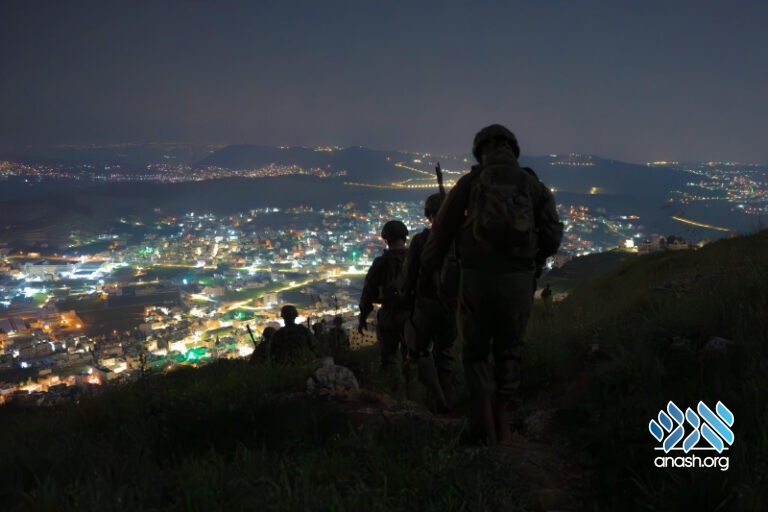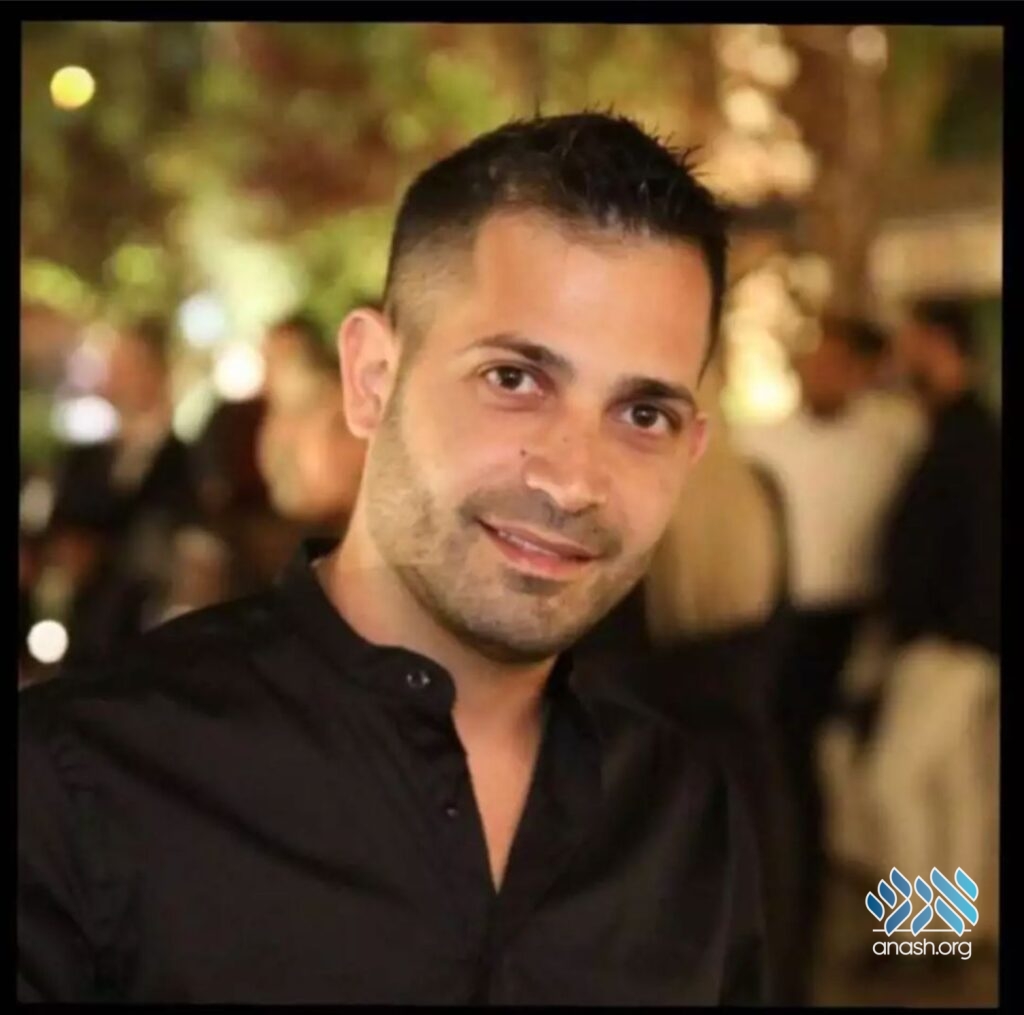War Summary, Day One Hundred and Seventy Two: As of late Tuesday night, there are ongoing heavy airstrike attacks in Rafah, Hezbollah anti-tank missiles fired at Avivim, where two missiles hit a winery and set it on fire, and Uriel Baruch was murdered by Hamas in captivity, and his body is still being held.
By Mrs. Bruria Efune
War Summary, Day One Hundred and Seventy Two:
134 held captive in Gaza.
112 hostages freed.
11 hostage bodies rescued.
36 hostages confirmed murdered in Gaza.
1,400+ Israelis murdered.
252 fallen soldiers in the battle in Gaza.
6 fallen soldiers in Northern Israel.
4 fallen soldiers in Judea & Samaria.
14,900 injured.
14,300 estimated rockets fired at Israel.
102,100 Israelis displaced from their homes.
1 Jewish nation united in prayer, charity, and good deeds.
Top Headlines:
- Israel withdrew its negotiations team from Qatar
- Heavy bombing reported in Rafah late Tuesday night
- Significant escalation in the north
Hostage Updates:
The Tikva Forum, which represents some of the families of the hostages, announced that Uriel Baruch was murdered by Hamas in captivity, and his body is still being held. Uriel, who is described by his family as a “happy man who was loved by everyone around him,” was kidnapped on October 7th from the area of the Nova Festival, while he was driving home. Uriel is survived by his wife Racheli, two children, parents Naomi and Amir, and three brothers.
Former hostage, Amit Soussana, bravely gave a three hour interview to the New York Times, in which she recounted the abuse and gender-based assault* she was subject to while in Hamas captivity. The New York Times published her story, without recounting details which she chose to keep private, and verified her story with her medical documentation from the 24 hours after her return. While Amit is the first to share her horrific story publicly, there are other female former hostages who are in treatment for severe PTSD, and have not publicly shared their stories.
Israeli Defense Minister Yoav Galant met today with his U.S. counterpart, Lloyd Austin. In their meeting, Galant stressed that the hostage negotiations require increased military pressure on Hamas and that Israel and the U.S. “join hands in the military and political efforts.”
After Hamas turned down the latest proposed hostage-release agreement, and restated unrealistic demands (including a complete IDF withdrawal from Gaza), Israel returned its negotiating team from Qatar.
*Euphemisms are used here for sensitivity to our younger readers, and for those with strong internet filters.
Gaza Front Updates:
Hamas did not successfully launch any rockets at Israeli civilians today.
Thank G-d, the IDF did not announce the names of any fallen soldiers today.
The Israeli Air Force has been carrying out significant airstrikes to aid advancing ground forces, recording over 60 on Monday alone, and a seemingly similar number today as well. The targets include buildings where terrorists are known to be gathered or have booby-trapped, tunnel shafts, and other strategic locations. The IDF also struck the location from where rockets were launched at Sderot late last night.
The IDF released a video of an interrogation with a senior Hamas commander, who revealed that between 600-1000 terrorists hid in the hospital, and used the management building and maternity ward to conduct terrorist activities from.
In Central Gaza, where two Hamas battalions are still active, particularly in Nuseirat and Deir al-Balah, the IDF carried out a series of airstrikes, and troops on ground eliminated more terrorists.
In Northern Gaza, the operation in Gaza City’s Shifa Hospital continued into its 9th day. Troops, including the Navy’s Shayetet 13 commando unit, have been rooting out combative terrorists who are hiding deep in the hospital, and in between patients. The IDF says that “several” terrorists were eliminated in the hospital today, and more weapons were located and confiscated. No patients or civilians have been hurt.
In Southern Gaza, the IDF eliminated more terrorists in al-Qarara, and in various areas in Khan Younis. The IDF didn’t give much more information about the operations in the al-Amal neighborhood after surrounding it yesterday, other than that terrorists were eliminated and weapons caches were captured.
As of late Tuesday night, there are ongoing heavy airstrike attacks in Rafah. In at least one instance, the IDF warned a family to evacuate before bombing the empty house.
The U.S. is still trying to talk Israel out of a maneuver into Rafah, as US Secretary of State Anthony Blinken told Defense Minister Yoav Galant that there are “alternatives to a ground operation in Rafah that would protect the security of the Palestinians as well as the security of Israeli citizens.” These alternatives do not comply with Israel’s goal to completely dismantle Hamas.
In total, six Hamas battalions remain whole, two in Central Gaza, and four all the way south in Rafah.
Earlier today, Hamas’s political leader, Ismael Haniyeh, met with Iran’s Supreme Leader Ayatollah Ali Khamenei. Haniyeh currently resides in Qatar, and traveled to Iran for the meeting.
Gaza Humanitarian Efforts Updates:
258 Humanitarian aid trucks were inspected and transferred to Gaza, 166 of these trucks carried over 7 million pounds of food.
125 packages (with over 250,000 pounds of food) were airdropped over Northern Gaza.
The UN aid agencies distributed only 116 aid trucks within Gaza today, out of which only 36 trucks carried food.
Overnight, 7 World Food Program food trucks made their way directly to northern Gaza. Over 300 trucks with over 13 million pounds of food have been transferred to northern Gaza since the beginning of March.
Once inside Gaza, most humanitarian aid, which is supposed to be distributed for free, is confiscated by Hamas who take stockpiles for their fighters and their families, and then sell the remainder to the black market, who then sell it in the markets to civilians for exorbitant prices. According to reports from civilians inside Gaza, prices have recently dropped in some areas. One Gazan on twitter wrote: “The Ministry of Economy [aka Hamas] lifted its control over the Rafah crossing [from where aid enters via Egypt]. Within 24 hours, prices fell by at least 50% on all types of food items.”
Northern Front Updates:
Today saw a back-and-forth escalation with Hezbollah, starting this morning with Hezbollah anti-tank missiles fired at Avivim, where two missiles hit a winery and set it on fire. This was followed by a huge barrage at the military base on Mount Meron, of which most were intercepted by the Iron Dome, and no hits were made. The IDF retaliated with an airstrike on a military compound used by Hezbollah’s aerial unit all the way in Northern Lebanon—outside of the Southern Lebanon range where the IDF has been keeping to most of the time.
Hezbollah returned with a heavy barrage of 50 rockets at civillian communities in Northern Israel, claiming they were targeting an IDF base. The IDF then carried out an airstrike on another Hezbollah aerial unit, this time un Baalbek, also deep into Northern Lebanon. The IDF also struck other targets in Southern Lebanon, some slightly expanding the firing range. Hezbollah announced 3 deaths today, totaling 251 terrorists since the beginning of the war.
Escalations like this have happened before, and seem to repeat in a cyclical manner, with Hezbollah reducing attacks to a steady drizzle, and the IDF reducing range in response. While the IDF will eventually have to deal with the Hezbollah problem, and diplomacy does not seem to be a possibility, it’s expected that Israel will wait until Hamas is mostly defeated, including in Rafah, so as to avoid a two-front war.
Hezbollah is facing some resistance within Lebanon, for example, residents of the predominantly Christian town of Rmeish in south Lebanon, prohibited Hezbollah terrorists from launching rockets on Israel from their town for fear of reprisal.
Meanwhile, this morning the IDF struck an Iranian target in Syria, which was involved in the plot to smuggle weapons to Palestinian terrorists in Judea and Samaria. Aside from material assets, 15 militants who were connected to the terror network were eliminated in the airstrike. In an unusual move, the IDF confirmed being behind the airstrike.
Houthi War Front Updates:
Houthi spokesman Yahya Sarie published a statement claiming that the militia, which operates on behalf of Iran, carried out “six operations using ballistic missiles and UAVs“ in the last 72 hours. According to him, “in four operations” an American ship and a British ship were attacked in the Red Sea, and “a military operation was carried out” against two American destroyers in the area.
Judea and Samaria Updates:
Overnight, the IDF, Shin Bet and border police forces operated in Beit Omer in Shevazion, after shots were fired from the village at the Tzur vineyards. In addition, 14 wanted persons were arrested throughout Judea and Samaria and in a brigade operation in Shechem [Nablus]. So far, about 3,600 wanted persons have been arrested in Judea and Samaria since the beginning of the war, of which about 1,600 of them are associated with Hamas, and the remainder associate with various other terror groups.
International Updates:
Columbia, Algeria, and Jordan are now attempting to enforce the UN resolution calling for an immediate ceasefire. They make no mention of forcing the return of the hostages.
General Updates:
John Spencer, chair of urban warfare studies at the Modern War Institute (MWI) at West Point and U.S. Army veteran, visited Israel and Gaza, and presented an in-depth expert analysis of the IDF’s actions. Spencer says that the IDF has created a new standard for urban warfare, which oddly, no one will admit.
Spencer writes: “In their criticism, Israel’s opponents are erasing a remarkable, historic new standard Israel has set. In my long career studying and advising on urban warfare for the U.S. military, I’ve never known an army to take such measures to attend to the enemy’s civilian population, especially while simultaneously combating the enemy in the very same buildings.”
Meir Biton, the owner of the Avivim Winery, says that he was inside the winery when two Hezbollah anti-tank missiles hit it, and set it on fire. The impact sent Biton flying 30 meters forward, before he ran out to safety, miraculously uninjured. It’s the fourth time since October 7th that the winery is hit by a Hezbollah missile, but the first time that it was damaged so badly. Firefighters were unable to reach the winery, due to its proximity to the border and ongoing Hezbollah fire.


Discussion
We appreciate your feedback. If you have any additional information to contribute to this article, it will be added below.